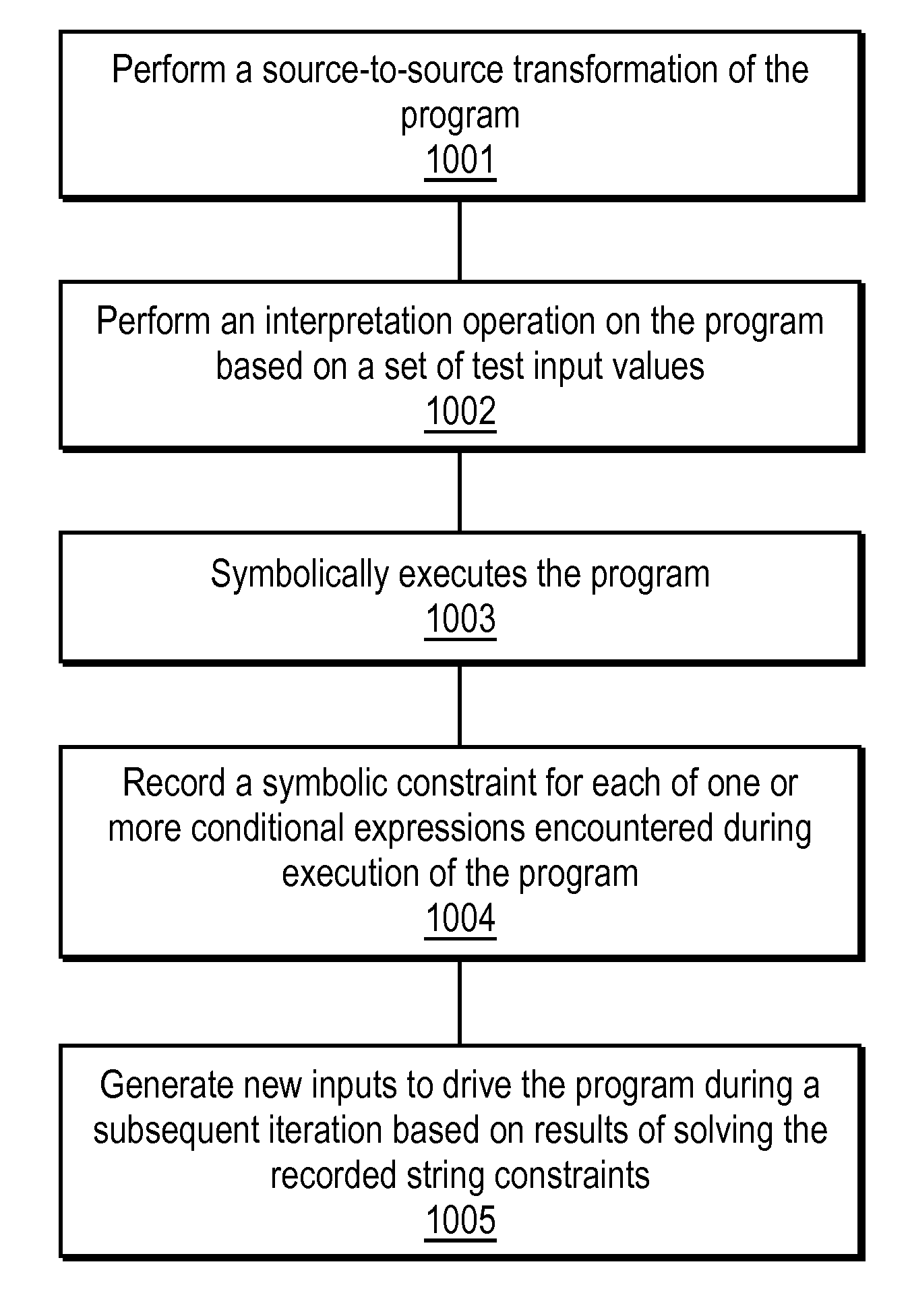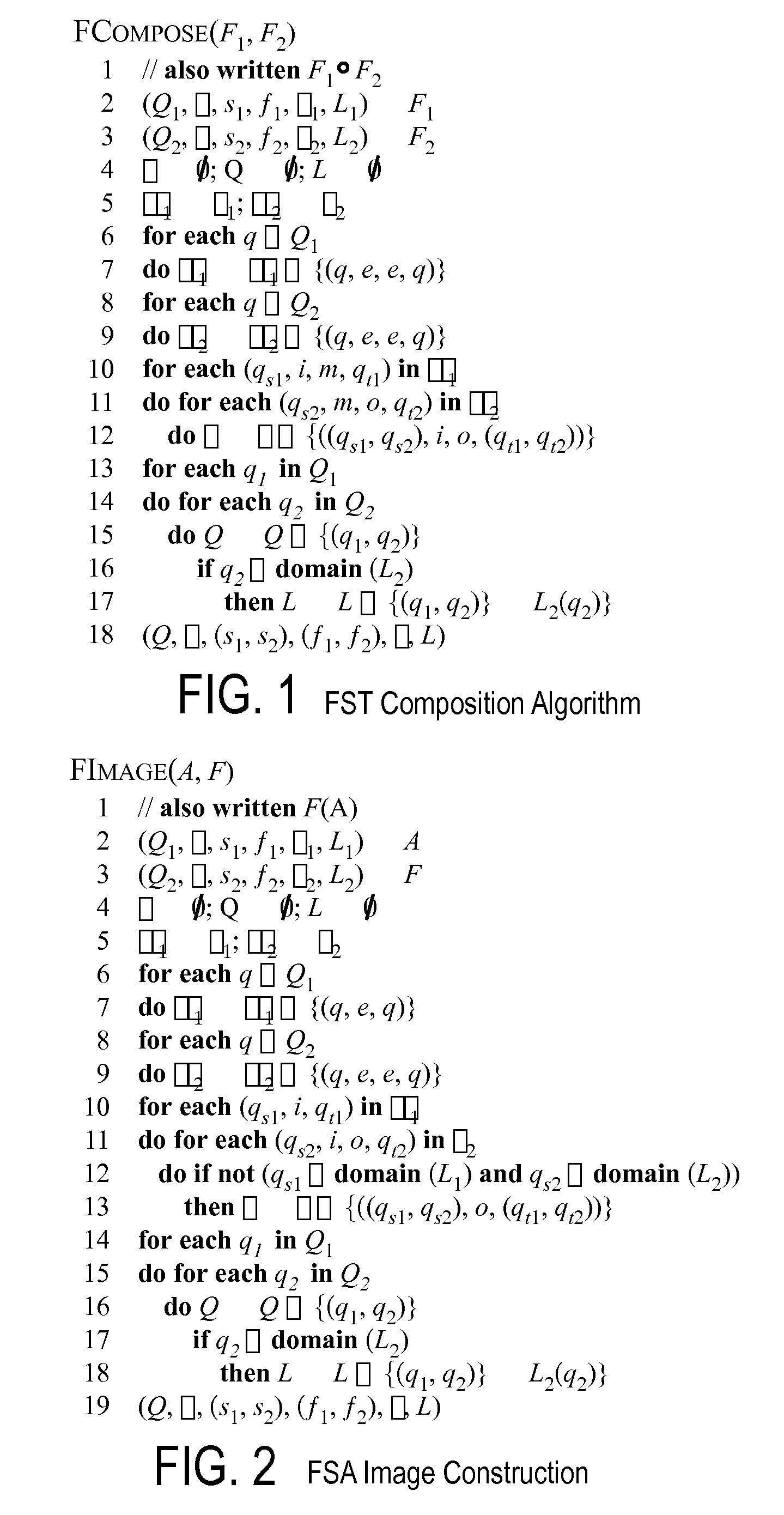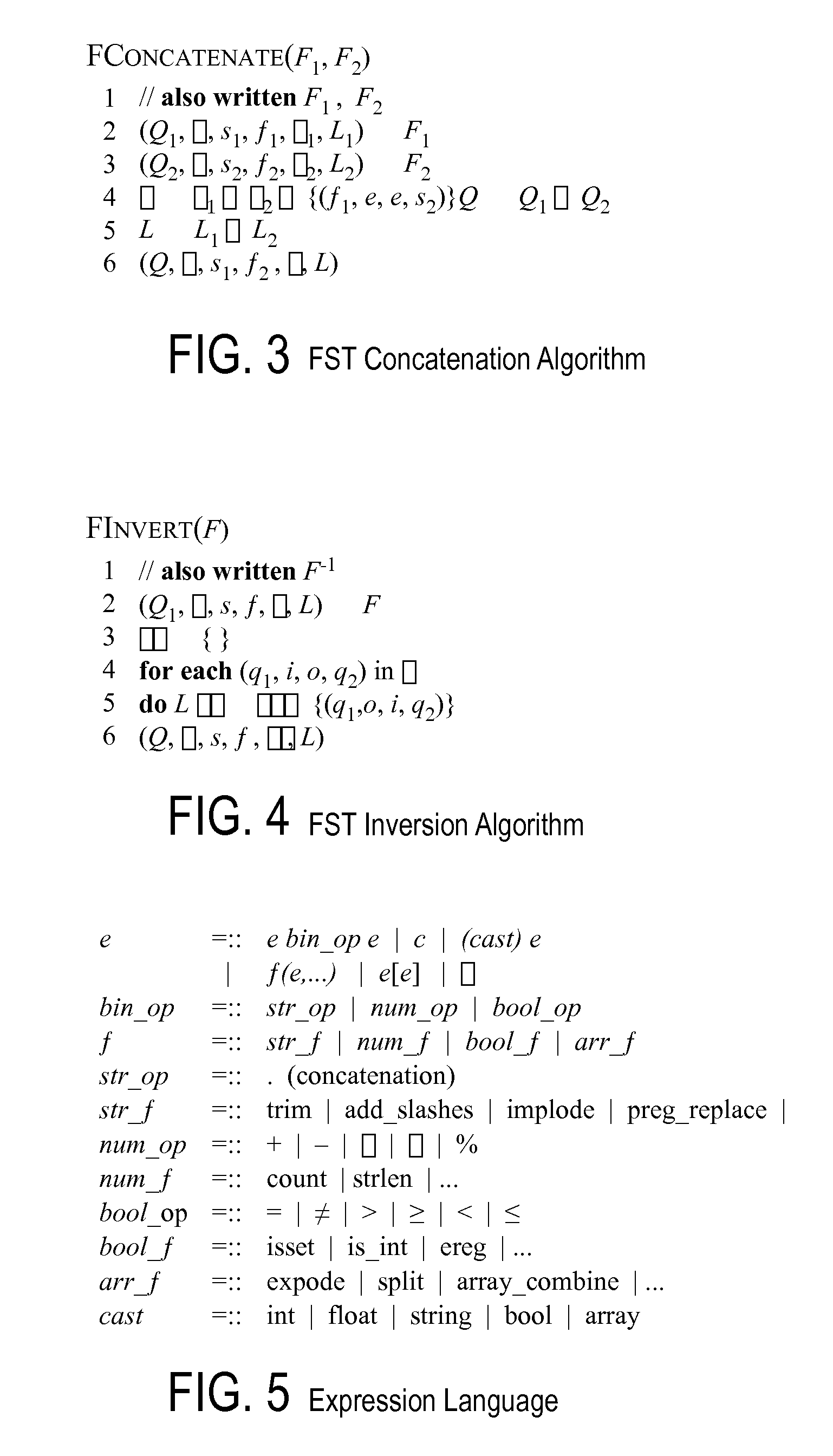Automated test input generation for web applications
a web application and input generation technology, applied in the field of computer program analysis, can solve the problems of large cost, large manual testing effort, and often redundant random input values
- Summary
- Abstract
- Description
- Claims
- Application Information
AI Technical Summary
Benefits of technology
Problems solved by technology
Method used
Image
Examples
Embodiment Construction
[0032]Methods and apparatuses for generating input strings based on symbolic constraints and concrete values gathered from program executions are disclosed. In one embodiment, test cases for applications are automatically generated that cover string- and array-centric operations and achieve a designated code-coverage metric: branch coverage or (bounded) path coverage. In one embodiment, library string functions are represented as finite state transducers (FSTs), and constraints on strings include equality and inclusion constraints. These FSTs can be composed and inverted to solve for input variables. When constraints cannot be represented precisely using finite state transducers concrete values can be used to construct approximations that are finite state transducers. In one embodiment, as part of the test input generation process, a process is used to check string values against existing policies to prevent SQL injection attacks and cross-site scripting. In one embodiment, the test...
PUM
 Login to View More
Login to View More Abstract
Description
Claims
Application Information
 Login to View More
Login to View More - R&D
- Intellectual Property
- Life Sciences
- Materials
- Tech Scout
- Unparalleled Data Quality
- Higher Quality Content
- 60% Fewer Hallucinations
Browse by: Latest US Patents, China's latest patents, Technical Efficacy Thesaurus, Application Domain, Technology Topic, Popular Technical Reports.
© 2025 PatSnap. All rights reserved.Legal|Privacy policy|Modern Slavery Act Transparency Statement|Sitemap|About US| Contact US: help@patsnap.com



